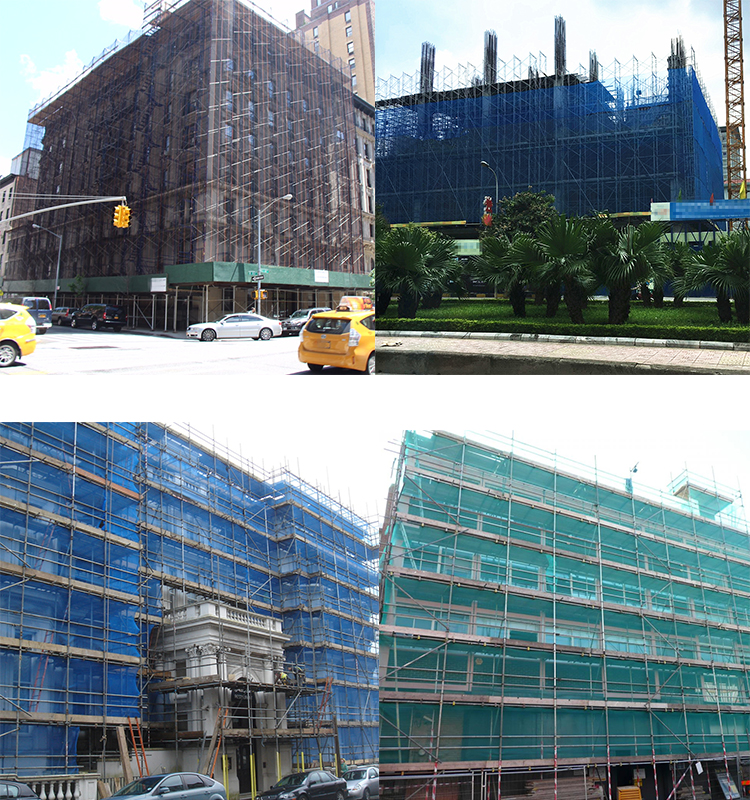ڇڪڻ واري ميش، جنهن کي ڊبرس نيٽنگ يا اسڪوفولڊ نيٽنگ جي نالي سان پڻ سڃاتو وڃي ٿو، هڪ قسم جو حفاظتي ميش مواد آهي جيڪو تعميراتي ۽ بحالي جي منصوبن ۾ استعمال ڪيو ويندو آهي جتي اسڪافولڊنگ کي اڏايو ويندو آهي. اهو ٺهيل ڪم جي علائقن مان ملبي، اوزار، يا ٻين شين جي زوال کي روڪڻ سان حفاظت فراهم ڪرڻ لاءِ ٺاهيو ويو آهي، انهي سان گڏ ڪم ڪندڙن ۽ ڀرپاسي جي ماحول لاءِ ڪنٽينمينٽ ۽ تحفظ جي سطح فراهم ڪرڻ لاءِ.

ڇڪڻ واري ميشعام طور تي اعلي کثافت پوليٿيلين (HDPE) يا پوليوپروپيلين (PP) مان ٺاهيو ويندو آهي ۽ مختلف رنگن ۾ موجود آهي، جهڙوڪ سائو، نيرو، يا نارنگي. اهو هڪ مضبوط ۽ پائيدار نيٽنگ ڍانچي ٺاهڻ لاءِ اڻيل يا بنايو ويو آهي جيڪو تعميراتي سائيٽن جي سختين کي برداشت ڪري سگهي ٿو.
جو بنيادي مقصدڇڪڻ واري جالگرڻ واري ملبي کي پڪڙڻ ۽ ان تي مشتمل آهي، ان کي زمين يا ويجهن علائقن تائين پهچڻ کان روڪڻ. هي هڪ محفوظ ڪم جي ماحول کي برقرار رکڻ ۾ مدد ڪري ٿو ۽ ڪارڪنن ۽ پيادلن جي زخم جي خطري کي گهٽائڻ ۾ مدد ڪري ٿي. اضافي طور تي، اهو واء ۽ مٽي تحفظ جي ڪجهه سطح فراهم ڪري ٿو، مٽي جي ذرات جي پکيڙ کي ڪنٽرول ڪرڻ ۽ ڪم واري علائقي کي صاف رکڻ ۾ مدد ڪري ٿو.
اسڪافولڊنگ ميش عام طور تي ڇڪڻ واري جوڙجڪ سان ڳنڍيل آهي لاڳاپا، ٿلهو، يا ٻين تيز رفتار طريقن سان. اهو اسڪواڊ جي فريم سان گڏ نصب ڪيو ويو آهي، هڪ رڪاوٽ ٺاهي ٿو جيڪو ڪم ڪندڙ علائقي کي بند ڪري ٿو. ميش کي هلڪو وزن ۽ لچڪدار هجڻ جي لاءِ ٺاهيو ويو آهي، انهي کي اجازت ڏيڻ جي اجازت ڏئي ٿي ته هو اسڪيل جي شڪل جي مطابق ۽ ڪيترن ئي زاوين کان ڪوريج فراهم ڪن.
جڏهن ڇڪڻ واري ميش کي چونڊيو، اهو ضروري آهي ته ان جي طاقت، سائيز ۽ نمائش تي غور ڪيو وڃي. ميش کي ان تي لڳل قوتن کي منهن ڏيڻ ۽ شين کي گذرڻ کان روڪڻ لاءِ ڪافي تناسلي طاقت هجڻ گهرجي. ميش ۾ کولڻ جي ماپ ايتري ننڍي هجڻ گهرجي ته ملبي کي پڪڙي سگهي، پر اڃا به مناسب نمائش ۽ هوا جي وهڪري جي اجازت ڏئي ٿي. اضافي طور تي، ڪجهه ڇڪڻ واري ميش کي UV اسٽيبلائيزر سان علاج ڪيو ويندو آهي انهن جي استحڪام ۽ سج جي روشني جي نمائش جي مزاحمت کي وڌائڻ لاء.
مجموعي طور تي، اسڪافولڊنگ ميش تعميراتي سائيٽن تي حفاظت کي وڌائڻ ۾ هڪ اهم ڪردار ادا ڪري ٿو، گرڻ واري ملبي جي خلاف حفاظتي رڪاوٽ فراهم ڪندي. ان جي تنصيب ۽ استعمال کي مقامي حفاظت جي ضابطن ۽ صنعت جي معيارن سان عمل ڪرڻ گهرجي ته جيئن ڪارڪنن ۽ عوام جي ڀلائي کي يقيني بڻائي سگهجي.
پوسٽ ٽائيم: مئي-06-2024
